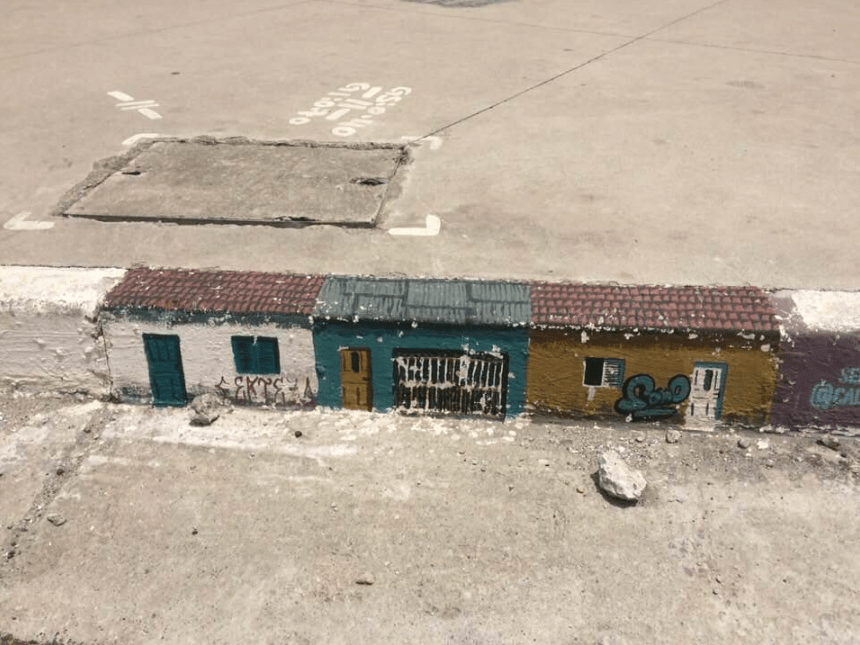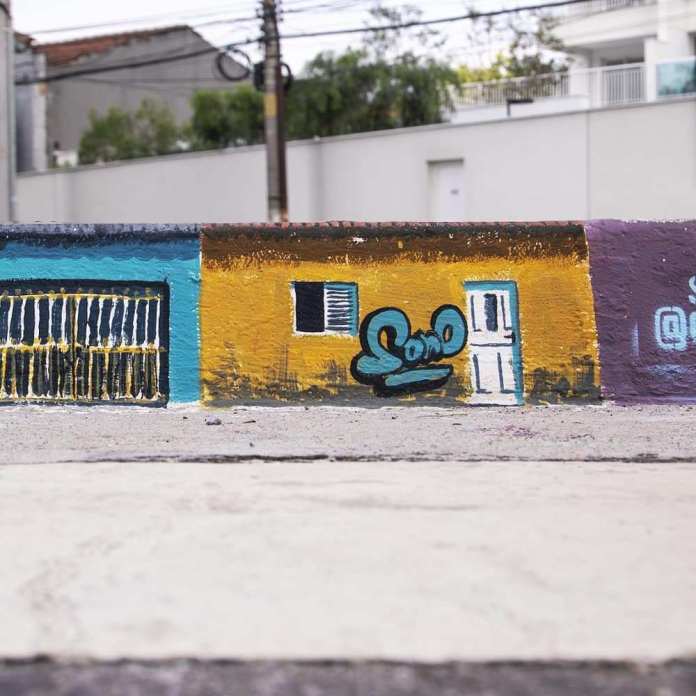We come with so many different shapes, sizes and abilities, yet the world is built as if there’s a “standard human” whose access and comfort takes precedent over everyone else. If you’re close enough to that artificial norm, you may not notice all of the ways in which people can be excluded.
A project called “A Sidewalk is a Wall” aims to call attention to one major barrier to accessibility: a lack of sidewalk ramps, particularly in the city of São Paulo, Brazil, where they can be exceptionally rare. Organized by Brazil-based youth disability justice movement NGO Movimento SuperAção, the project invites artists to find a sidewalk without an access ramp and decorate it. Each small work of art bears a stencil with the movement’s Instagram handle so people can learn more about the movement and call the city to request more accessibility.
Accessibility should be a crucial part of any design that’s meant to serve people. Collectively, we have a long way to go to make this happen, but even small steps add up.
“For a wheelchair user, a sidewalk without an access ramp is a wall. And, according to the latest census, only 9% of sidewalks in São Paulo have access ramps. Therefore, to draw attention to this lack of accessibility, we invited artists to do what they do best to the city’s walls to do their art on walls that only wheelchair users are aware of.”
“This is how A SIDEWALK IS A WALL came about, a project by NGO Movimento SuperAção that took on the responsibility of raising society’s awareness about the importance of including people with disabilities. Not only because of the basic human rights principle, but also because of the obvious and inherent advantages of coexisting with differences.”
You can learn more about the movement at Facebook.com/movimentosuperacao or by following the project on Instagram @calcadaemuro.

